Meunière Sauce is a rich, simple pan sauce that derives its distinctive flavor from its main ingredients-butter, parsley and lemon juice. When spooned over pan-fried speckled trout, you have perhaps the most popular dish on the menu of Creole restaurants in New Orleans, Trout Meunière. There are many variations of the Meunière sauce recipe, but the resulting flavor is distinctive and very New Orleans. Here is how to make Sweet Daddy D’s simple, no-angst recipe for the New Orleans classic, Trout Meunière, Meunière sauce served over fried speckled trout.
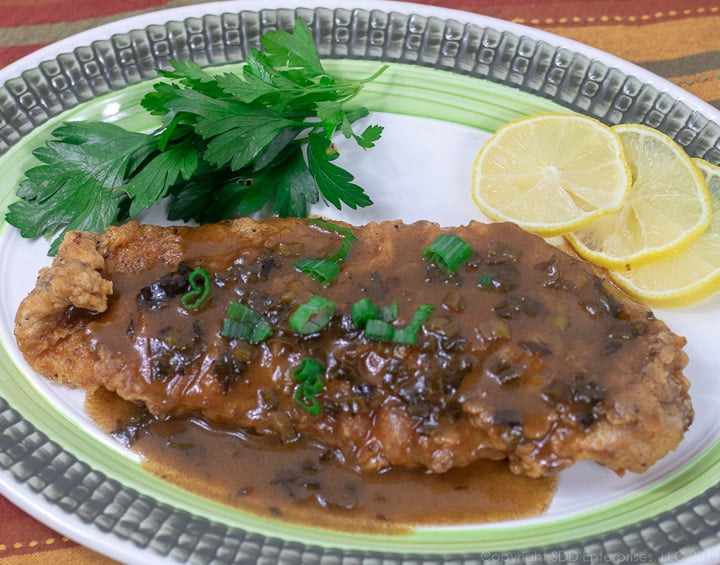
This post is not sponsored, but you will find affiliate links on this page. As an Amazon Associate, I earn from qualifying purchases. The price you pay as a consumer does not change, but I may make a small commission based on your purchase.
What is Meunière Sauce?
The term, Meunière, refers to both a sauce and a method. Pronounced muhn-yair, the literal translation of this French term is “Miller’s Wife”. It would be common for a miller’s wife to use the mIller’s flour in cooking, thus the term à la meunière (in the manner of the Miller’s wife) means cooking something that has first been dredged in flour. A Meunière Sauce (or Sauce Meunière) is a simple, brown butter sauce, most probably the pan sauce made by the miller’s wife after she had cooked something à la meunière.
Is Meunière Sauce Creole?
Meunière sauce, in the classic French tradition, is a somewhat rustic, simple sauce made from brown butter enhanced with parsley and lemon. With the readily available bounty of seafood from the Gulf of Mexico and the culinary influence of French cuisine, the adaptation of this sauce was inevitable in Creole cuisine. The creation of the Creole-style Meunière sauce is credited to Arnaud Cazenave, hailed as Count Arnaud of the famed Arnaud’s Restaurant, which was founded in 1918 and still serves as one of the few classic French Quarter Creole restaurants and a prime example of haute Creole. The Creole-style of Meunière sauce enriches the basic French style by adding flour, stock, and seasoning which fortify and stabilize the sauce.
Is Meunière sauce just for fish?
Meunière Sauce is usually served over seafood, normally a Gulf fish like speckled trout, drum, redfish, or red snapper, but it’s also delicious over shrimp, soft-shell crab or other firm, flaky white meat fish, even freshwater fish. But this sauce is so good it should not be limited to just seafood. Try it over sliced pork tenderloin and panéed chicken cutlets. The possibilities are endless, I have yet to find anything that is not delicious with Sauce Meunière on top!
Here’s What You Need
This recipe is for four filets of Gulf fish, I’m using Speckled Trout but as I said you can substitute just about anything you want. The fish should be filleted with the skin removed. Make sure to check for any bones the fish cleaner missed.
- To prepare the fish for frying you’ll need:
- whole milk and eggs-you can substitute 2% milk
- All-Purpose flour
- Optional seasonings such as Creole seasoning, garlic powder, herbs, kosher salt and pepper
- vegetable oil for frying-canola oil is very good but you can use your favorite
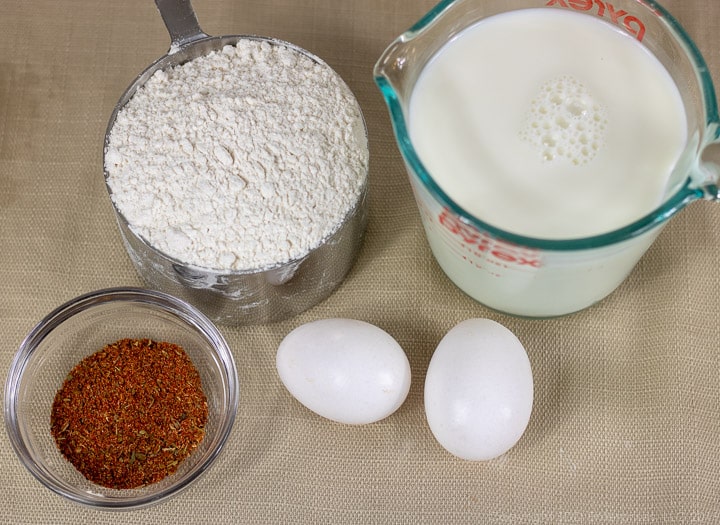

- For the Meunière sauce:
- Butter-salted or unsalted is fine
- Fresh chopped parsley (see Hints and Tips)
- Fresh lemon juice
- All-Purpose flour
- Green onions (also known as spring onions or scallions)
- Chicken (or veal) stock
- Worcestershire and Tabasco sauces
- Kosher salt and fresh ground black pepper
Here’s What You Do
First...you have a beer. The Mise en place for this recipe is really quite simple and does not take long. It starts with popping the cap off a beer, then sitting down and reading through the recipe to make sure you have everything you need and know what to do with it before you proceed.
Prepare the fish
Rinse the fillets under cold water and pat them dry with a paper towel. Make sure to feel for any bones by running your flat hand along both sides. If you feel any bones, remove them before you cook the fish (fish tweezers like these are perfect for the job!). Sprinkle Creole seasoning over both sides of the fish and pat with your hands, then set them aside.
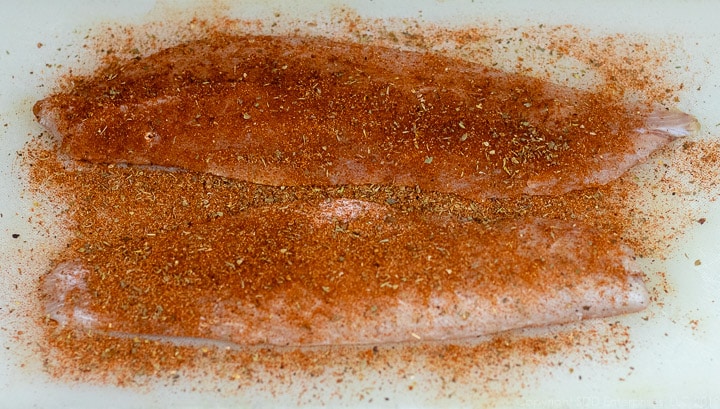
Prepare a baking sheet with a wire cooling rack to place the fish on after they are fried. Preheat the oven to a very low 150 to 170 degrees to keep the fish warm while you make the sauce.
Prepare the coating mix
Place the flour and optional seasonings in a flat baking dish and mix the eggs and milk together in a separate bowl. I try to have a few different sizes of disposable aluminum pans around for this. (Note-this is an excellent time to introduce some seasonings that you like: try some dashes of your favorite hot sauce in the milk and eggs, add your favorite creole seasoning, garlic powder or some herbs in with the flour.)
Prepare the sauce ingredients
Cut the butter into approximate tablespoon-size pieces so that it will melt quickly, squeeze the lemon into a small bowl, chop the parsley and green onions, then measure out the flour, stock and Worcestershire sauce. Make sure the Tabasco sauce is handy. You are ready to go, take a swig of that beer!
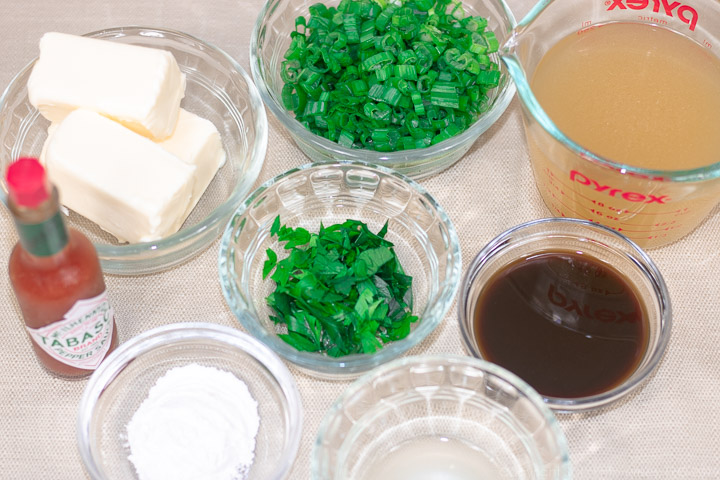
Fry the Fish
Place a cast-iron skillet over medium heat and add about ½ to ¾ inches of vegetable oil. Heat the oil to 350 degrees. While the oil is coming up to temperature, coat the fish using the dry-wet-dry method (see the Hints and Tips).
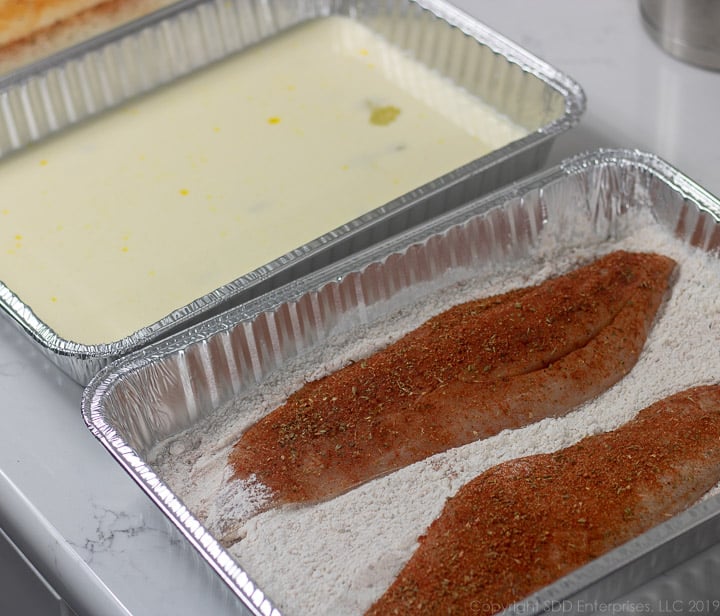
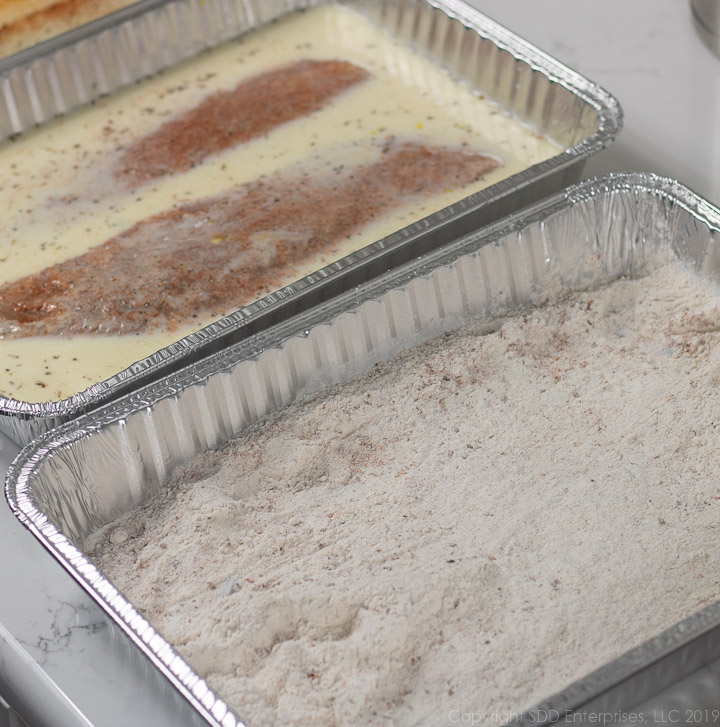
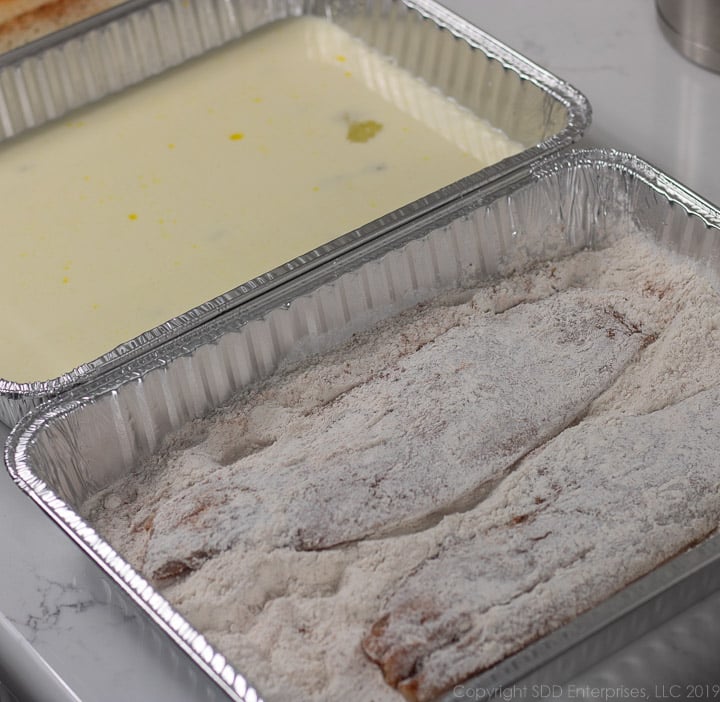
When the oil is up to temperature, carefully place the coated fillets in the hot oil. You are looking for a nice golden brown and a little crisp on the skin, so fry on one side for about 2 to 3 minutes, then gently turn the filets over using tongs and a fish spatula and fry the other side for about two to three minutes. (See Hints and Tips about frying time)
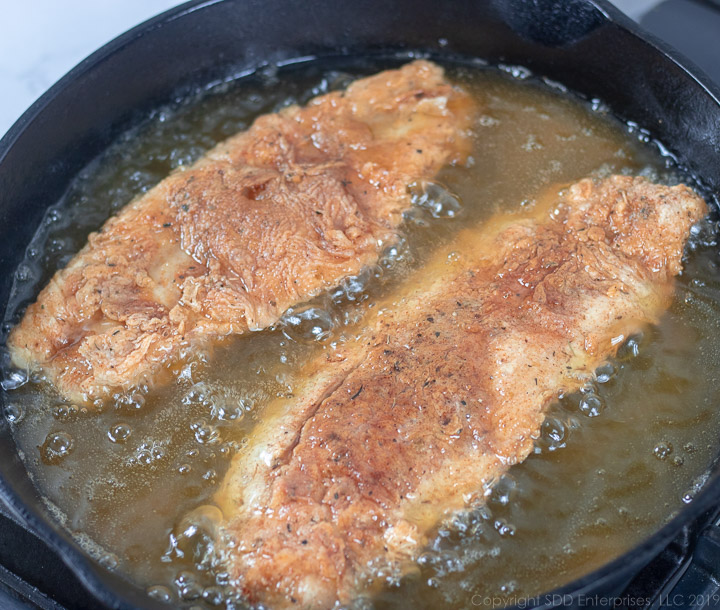
Remove the filets to the prepared baking sheet and place the baking sheet in the warmed oven (uncovered) while you prepare the next batch or make the sauce. Make sure that the oil comes back to temperature (350 degrees) before frying the next batch-if not, the fish will not be crispy.
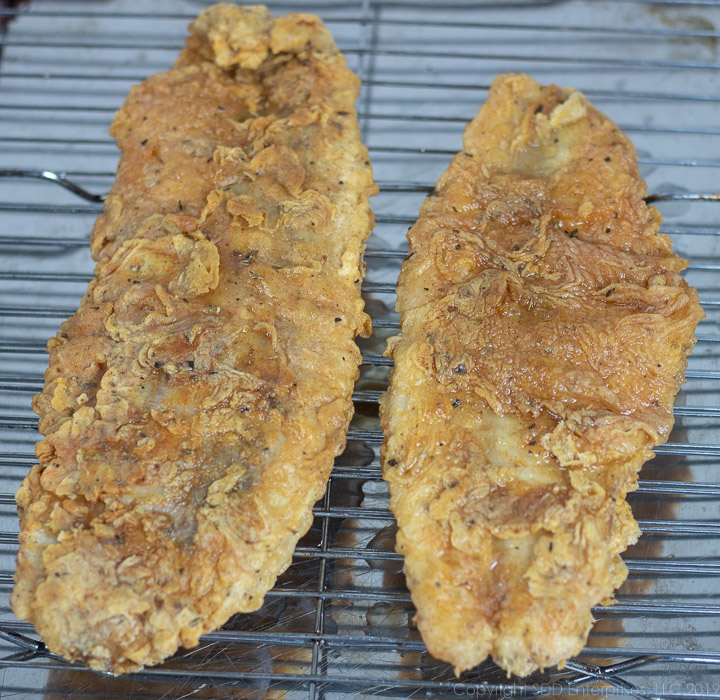
Prepare the sauce
With the fish in the warming oven, place a large saute pan (see Hints and Tips about the pan) over medium-high heat and add 1 ¾ stick of butter, that's all but 2 tablespoons, which are reserved to finish the sauce.
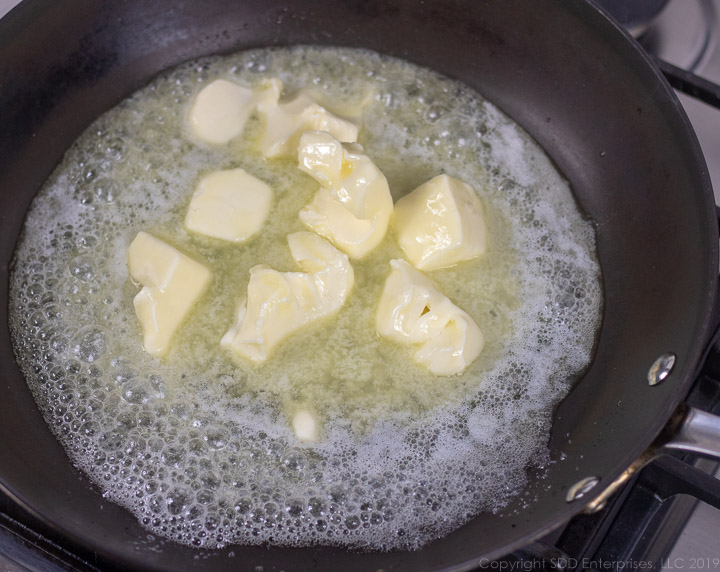
Once the butter is nearly melted and starting to bubble, throw in the chopped parsley, stirring constantly for one or two minutes.
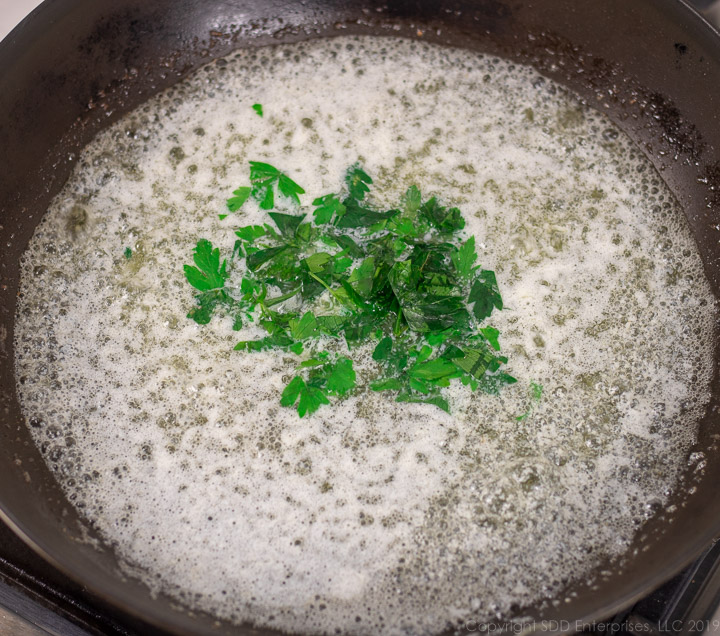
Sprinkle in the flour and whisk together until a light brown roux starts to develop, which will take about 5 minutes. This mixture will really be bubbing, but keep stirring so it does not burn.
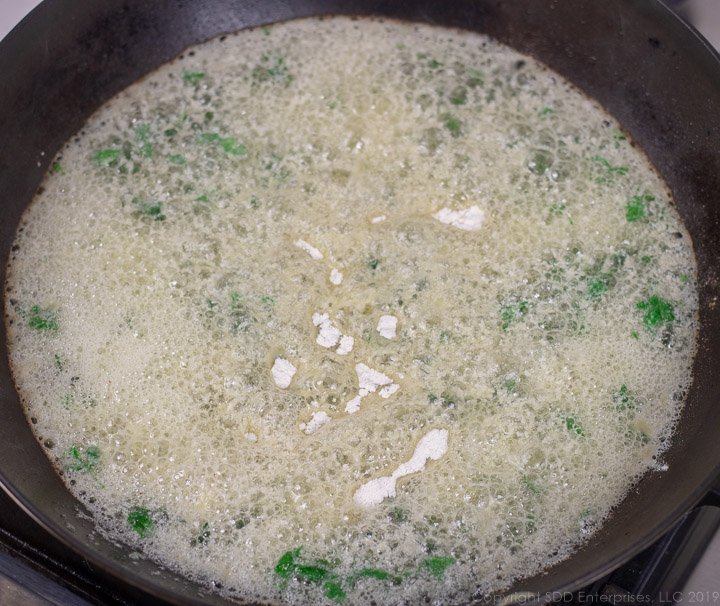
Add about ⅔ of the green onions (see Hints and Tips), and continue to stir for another couple of minutes.
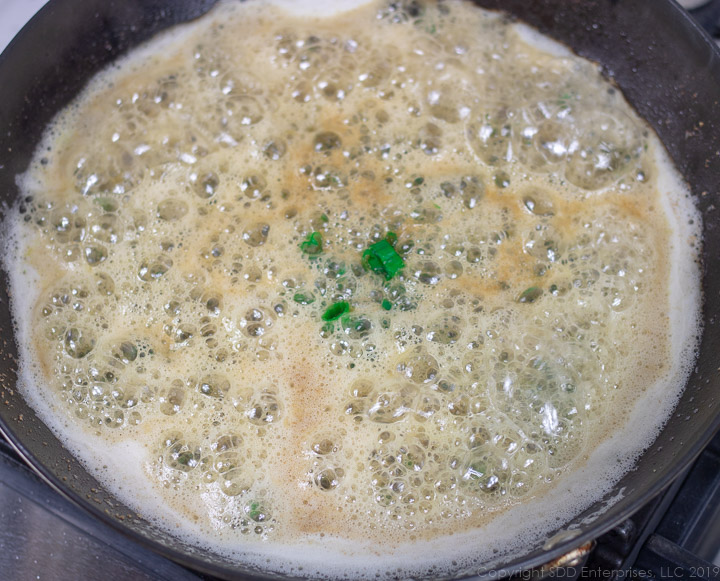
Next, whisk in the stock, lemon juice and Worcestershire sauce and combine thoroughly. Increase the heat to bring the mixture to a heavy simmer.
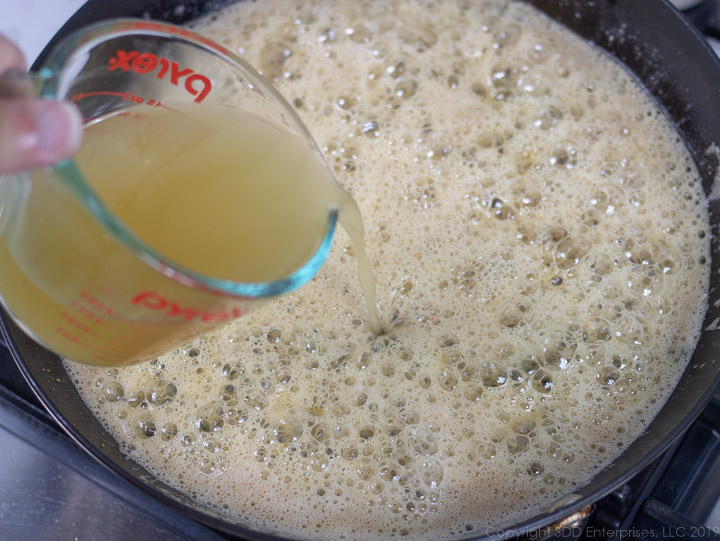
After a minute or two of a heavy simmer, lower the heat and cook it on a slight simmer for about 5 to 10 minutes while it thickens slightly.
Finish the Sauce and Plate
While the sauce is thickening slightly, take the fish fillets from the oven and place on plates. (Pro tip-serving this on warmed plates is special. Just slip the plates in the warming oven for a couple of minutes (it doesn’t take long!) When you’re ready to plate the fish, make sure to use a kitchen towel or potholder to handle the plates...a hot plate looks an awful lot like a cold plate).
Finish the sauce by adding the reserved 2 tablespoons of butter and a few dashes of Tabasco sauce. Shake the pan back and forth until the butter completely melts. Gently stir it all together to combine. Taste the sauce and add kosher salt and fresh ground pepper if needed.
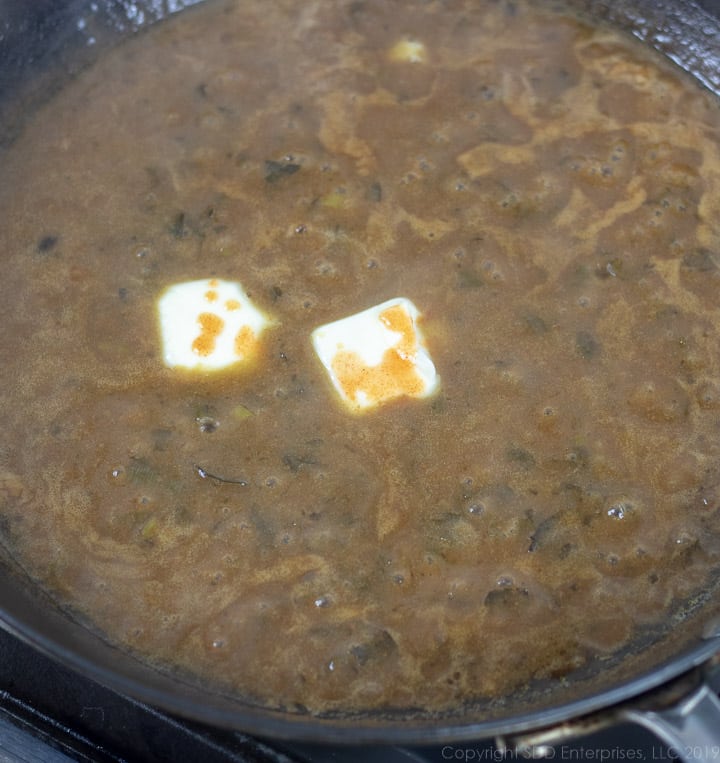
Spoon about ¼ cup of sauce over each fish filet, sprinkle some green onions on top and serve immediately. Man, that looks and smells fabulous!
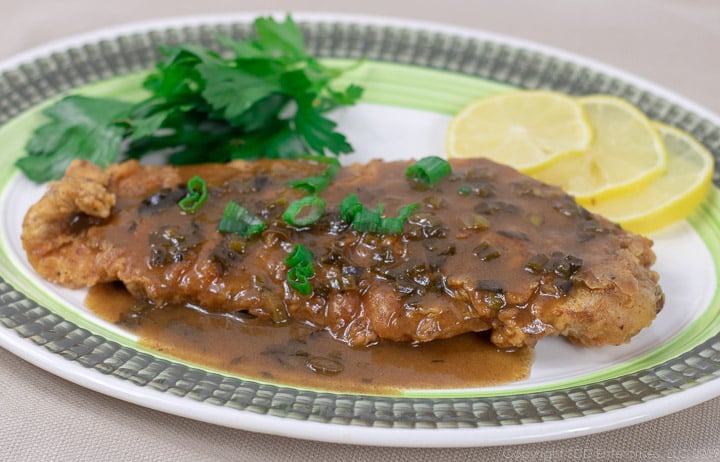
Hints and Tips
- Resist the temptation to use too much flour when making the sauce. Its purpose is to slightly thicken the sauce. The combination of the butter and parsley will begin the thickening process which will be helped along by only a small amount of flour. The butter will begin to brown and the addition of flour will result in a light brown roux.
- When chopping parsley, don’t go crazy...just a rough chop will do. Don’t mince it or chop it too fine, that may make it a little bitter.
- You can use the same cast iron pan in which you fried the fish to make the sauce, if you’d like. Before you get started (during your mise en place steps) make sure to have something in which to pour the hot, used oil, like a pyrex bowl or something that will take the heat. Carefully pour the oil off, then wipe the pan with paper towels making sure to get any oil that dripped on the side-that could be a fire hazard. Remove any burned or very brown bits of batter, but the pan does not have to be completely cleaned out. Once its wiped out, start off with the butter and go from there. If you saute the fish in a butter instead of frying in oil, you can use the pan without cleaning it out (you may want to remove any burned morsels of flour that remain.)
- The best way to get a light batter on the fish is by using the wet-dry-wet method. Simply, dredge the fish filet in flour (dry), shake off the excess, dip the coated filet in the egg mixture (wet), then letting the excess drip off before finishing in the flour again (dry). Use one hand to handle the flour dredges (dry) and the other hand to handle the egg mixture dip (wet). While the oil is getting to temperature you can do the first two steps, leaving the fish in the egg/milk while the oil heats. Once it reaches 350 degrees, just let the excess egg/milk drip off and dredge through the flour, shake off excess and carefully place the fish in the pan.
- When placing the fish in the hot oil, hold the fish on the tail end with the fingers of one hand, shake off the excess flour before gently placing the other end of the fish into the hot oil, starting with the end of the pan closest to you and slowly laying the whole filet in the pan moving away from you. This will help avoid being splashed with hot oil-I hate when that happens!
- There are (at least) three ways to prepare the fish on top of the stove: pan-fried as described here, deep-fried and pan sauteed. If you prefer to deep fry the fish, use about 4 or 5 inches of oil (or enough to fully submerge the filet). Bring the oil to 350 degrees before placing the fish in the oil. It should only take 4 to 6 minutes to cook the fish, depending upon the thickness of the filet. To pan saute, skip the egg and milk and just dredge the seasoned fish in the flour. Melt butter (clarified butter is best) in a cast-iron skillet until bubbly, shake off the excess flour and place the fish into the hot skillet. Saute each side for 2 to 3 minutes depending upon the thickness of the filet. You could alternatively bake or broil the fish. Prepared just as you would for pan sauteing, then to bake, place the fish in a 400-degree oven on a baking sheet and bake for about 10 to 15 minutes, depending upon the thickness. To broil, place a couple of tabs of butter on each prepared filet and place it on the second rack under the broiler for 7 to 10 minutes, watching carefully not to burn it.
- This recipe was developed using speckled trout, which is a fairly thin fish. It is cooked perfectly in 2 to 3 minutes per side. If you are using a different fish, adjust the cooking time to fit the fish you are using.
- Make sure to save some of the green onions to sprinkle on top of the finished dish. Delicious and beautiful!
The absolute best side dish for this is Brabant Potatoes-check it out.
Love those Creole dishes?? Here are a few of Sweet Daddy D's most popular Creole recipes.
Feel like fish, but want something a little different? Try this:
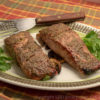
If you make this recipe, please tell us about it in the Comments section below and make sure to LEAVE A RATING ON THE RECIPE. Post a picture on our Facebook page or on Instagram with a #firstyouhaveabeer. Make sure to Pin it on Pinterest. Follow us on Facebook, Instagram, Twitter and Pinterest and make sure to share this with your friends…they will love you for it. SIGN UP FOR OUR EMAIL UPDATES below so you don't miss anything!
Sign up for my email notifications of new recipes and posts right HERE.
Yeah You Right!
Recipe
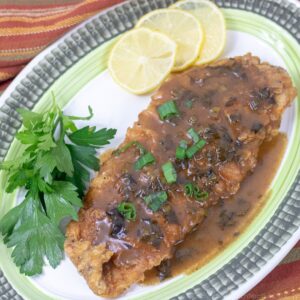
Trout Meunière
Here's What You Need
For the Fish
- 4 Trout Filets See Notes
- 2 tablespoons Creole seasoning
- 2 cups All-purpose flour
- 2 tablespoons optional seasonings See Notes
- 2 cups whole milk
- 2 eggs
For the Sauce
- 1 tablespoon All-purpose flour
- 2 sticks butter divided
- 1 tablespoon chopped parsley chopped
- 1 cup green onions chopped
- 1 cup chicken stock
- Juice of ½ lemon
- 3 tablespoons Worcestershire sauce
- Several dashes of Tabasco
- Kosher Salt & Ground Black Pepper
Here's What You Do
To Fry the Fish
- Rinse the fillets under cold water and pat them dry with a paper towel. Feel for bones and remove them before you cook the fish (a tweezer is good for this).
- Sprinkle Creole seasoning over both sides of the fish and pat with your hands, set aside.
- Prepare a baking sheet with a wire cooling rack to place the fish on after they are fried.
- Preheat the oven to a very low 150 to 170 degrees to keep the fish warm until ready to serve.
- Place the flour and optional seasonings in a flat baking dish and mix the eggs and milk in a separate bowl.
- Place a cast-iron skillet over medium heat and add about ½ to ¾ inches of vegetable oil. Heat the oil to 350 degrees.
- While the oil is coming up to temperature, coat the fish using the dry-wet-dry method (see Recipe Notes)
- Carefully place the coated fillets in the hot oil. Fry for 2 to 3 minutes on each side until golden brown. Make sure that the oil comes back to temperature (350 degrees) before frying the next batch.
- Remove the filets to the prepared baking sheet and place in the warmed oven (uncovered) until ready to serve.
To Make the Sauce
- Melt butter in a skillet over medium-high heat.
- Sprinkle in the flour and stir or whisk continuously until a light roux develops.
- Add about half of the green onions (reserve the rest) and stir together for about 5 minutes.
- Slowly add the stock, lemon juice and Worchestershire sauce and stir to combine.
- Increase the heat to bring the mix to a high simmer for about 2 minutes.
- Add the tabasco sauce and reduce the heat to a low simmer.
- Allow the sauce to simmer for 5 to 10 minutes until it starts to thicken slightly.
- When the sauce has thickened slightly, add the remaining 2 tablespoons of butter and shake the pan back and forth while the butter melts.
- Taste for salt and pepper and add according.
- To serve, place a fillet on each dish and ladle about ¼ cup of sauce on each fillet. Sprinkle top with reserved green onions.
Recipe Notes
- This recipe was developed using speckled trout, which is a fairly thin fish. It is cooked perfectly in 2 to 3 minutes per side. If you are using a different fish, adjust the cooking time to fit the fish you are using.
- Meunière sauce is perfect served over a Gulf fish like speckled trout, drum, redfish, or red snapper, but it’s also delicious over shrimp, soft-shell crab or other firm, flaky white meat fish, salmon and talapia. It's great served over pork chops, veal chops, veal cutlets, pork tenderloin and panneed chicken cutlets.
- You can use the same cast iron pan in which you fried the fish to make the sauce if you’d like. Before you get started (during your mise en place steps) make sure to have something to pour hot, used oil into, like a pyrex bowl or something that will take the heat. Remove any burned or very brown bits of batter, but the pan does not have to be completely cleaned out. Start the sauce with the butter and go from there. If you saute the fish in a little butter instead of frying in oil (as described below), you can use the pan without cleaning it out (you may want to remove any burned morsels of flour that may be bitter.)
- When preparing the egg/milk and the flour for coating the fish, add some seasonings if you would like. Some hot sauce and fresh ground black pepper in the egg and milk; creole seasonings, garlic powder, and some herbs are great mixed in the flour.
- Use a wet-dry-wet method to coat the fish. Use one hand to handle the flour dredges (dry) and the other hand to handle the egg mixture dip (wet), dredge the fish filet in flour (dry), shake off the excess, dip the coated filet in the egg mixture (wet), letting the excess drip off before finishing in the flour again (dry).
- When placing the fish in the hot oil, hold the fish on the tail end with the fingers of your right hand, shake off the excess flour before gently placing the other end into the hot oil, starting with the end of the pan closest to you and slowly laying the whole filet in the pan moving away from you. This will help avoid being splashed with hot oil.
- Make sure that the oil reaches 350 degrees before frying and returns to 350 degrees before frying the next batch-if not, the fish will not be crispy.
- When placing the fish in a warmed oven, do not cover the pan. Covering will create some steam which will also ruin the crispyness.
- There are (at least) three ways to prepare the fish on top of the stove and two in the oven:
- pan-fried as described here
- deep-fried: use about 4 or 5 inches of oil (or enough to fully submerge the filet). Bring the oil to 350 degrees before placing the fish in the oil. It should only take 4 to 6 minutes to cook the fish to a golden brown, depending upon the thickness of the filet
- pan sauteed: skip the egg and milk and just dredge the seasoned fish in the flour. Melt about 4 tablespoons of butter (clarified butter is best) in a cast-iron skillet until bubbly, shake off the excess flour and place the fish into the hot skillet. Saute each side for 2 to 3 minutes depending upon the thickness of the filet.
- Bake: Prepared just as you would for pan sauteing, place the fish on a baking sheet into a 400-degree oven and bake for about 10 to 15 minutes, depending upon the thickness.
- Broil: Prepared just as you would for pan sauteing, place the fish on a baking sheet, place a couple of tabs of butter on each prepared filet and place on the second rack under the broiler for 7 to 10 minutes, watching carefully not to burn it.
- Make sure to save some of the green onions to sprinkle on top of the finished dish. Delicious and beautiful!

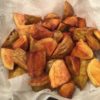

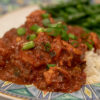
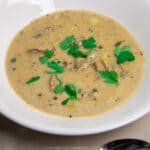
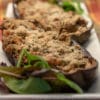
Susan Brodie
Wow! ANOTHER fabulous recipe. And I was hesitant to even try this becuz I’m not a big trout fan… but I AM now! Just overly delicious! Love this—will make it again… becuz I only like trout using THIS recipe! YUM
Sweet Daddy D
Thanks for such a nice review. I appreciate you giving this a try, particularly if you were hesitant at first. I'm super excited that you loved it!
Tonellaz
In the actual recipe I see that the parsley has been omitted in the sauce. I'm sure that's just a typo...?
Sweet Daddy D
Hi @Tonellaz. Yes, I had a little slip there. The parsley is in the ingredient list (and the step-by-step article) but I neglected to add it to the recipe instructions. Thanks for catching that. Throw it in between the butter and the flour. Sorry about that, I'll fix it as soon as possible. Thanks again for reaching out.